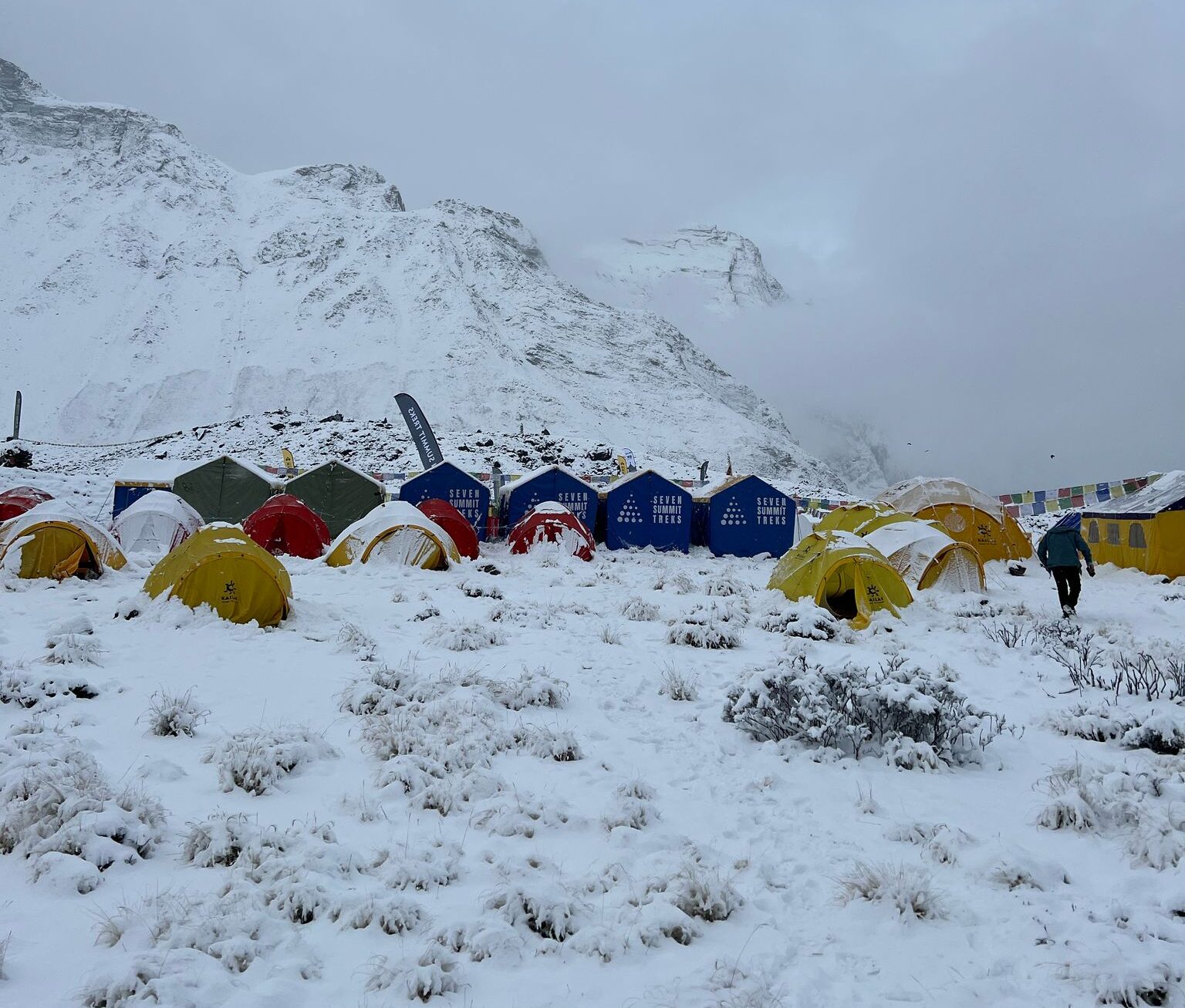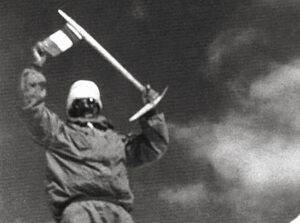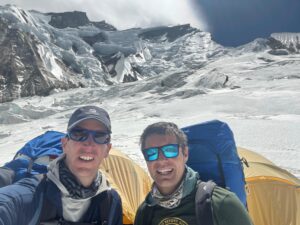Sherpas on Annapurna have located the bodies of Rima Sherpa and Ngima Tashi Sherpa, who died in an avalanche on Tuesday. They found the bodies thanks to a Recco reflector in their clothing.
The deceased worked for Seven Summit Treks (SST), the only team still on the mountain. A second SST group hopes to launch a new summit push as soon as the weather improves.
Recco detection
The climbers were slightly above Camp 2 when the avalanche struck. Climbers on the mountain suspected that the snow had carried the victims inside a crevasse. Yesterday, a group of Sherpas searching for them found a signal emitted by a Recco reflector, as seen in a video shared by expedition leader, Chhang Dawa Sherpa.
All the Sherpa staff with Kathmandu-based SST use Recco reflectors in their clothes or gear. These passive reflectors can help locate a person when a search team uses a specific device that emits a radio signal. If the passive reflectors on the victims’ clothes bounce back the signal, the searchers’ device emits a beeping sound, as demonstrated in the video.
Such reflectors are present by default in a wide range of mountaineering gear and were made mandatory for Everest climbers last year.
So while at least one of the bodies has been located, it is unclear if their remains will be recovered.
Crevasse before and after the avalanche
Fifteen minutes before the avalanche struck, John Black of South Africa crossed what he believes is the same crevasse where the missing Sherpas ended up. As he explained to ExplorersWeb, it was easily crossed with a two-piece ladder.
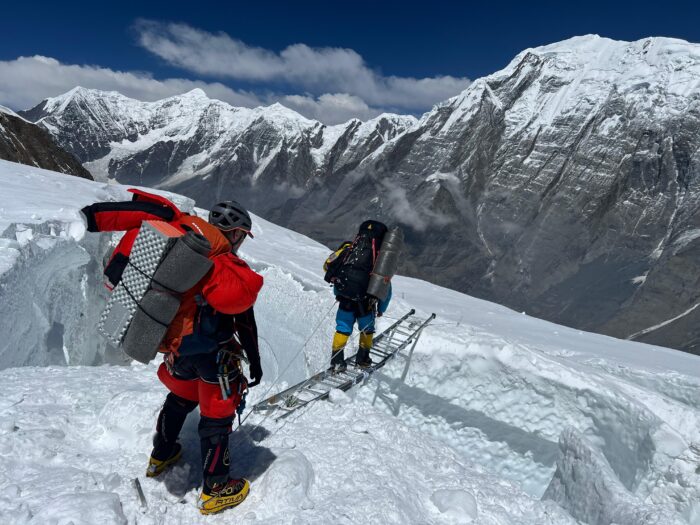
The crevasse where the avalanche swept the two Sherpas, 15 minutes before the accident occurred. Photo: John Black
Black noted that the crevasse was much wider the following day when his climbing partner, Warren Eva, passed by it on his way down from the summit. (See the piece of the ladder by the crevasse.)
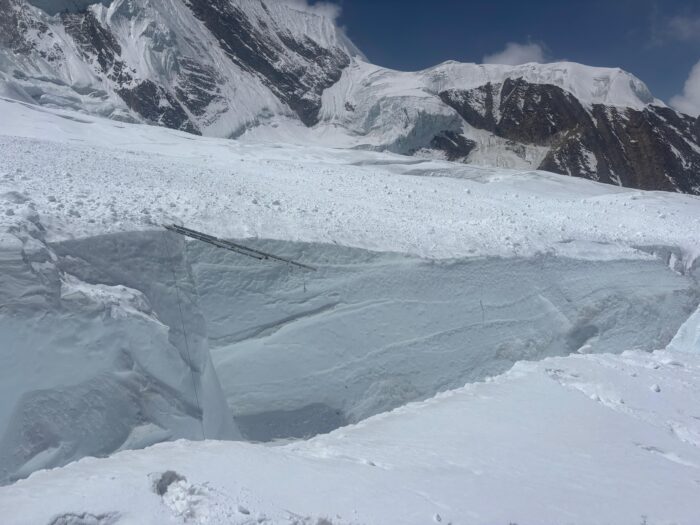
The same crevasse as in the upper photo, a day after the avalanche. Photo: Warren Eva
John Black turned around shortly after starting his summit push on Annapurna and missed the avalanche by minutes on his way down. Warren Eva was the first non-Nepalese to reach the summit and witnessed the situation in Camp 3 during the hours after the avalanche damaged a section of the ropes. We are currently working on an interview with them for ExplorersWeb.
As of today, 75 people have died on Annapurna; 39 out of them — nearly half — in avalanches, ExplorerWeb’s KrisAnnapurna points out. Out of the 75 casualties, 20 were Sherpas, including Rima Sherpa and Gnima Tashi Sherpa.
More would-be summiters
For the first time this season, a thin layer of snow covers Annapurna Base Camp. The forecast is for more snow in the next few days. Pioneer Adventure, 8K Expeditions, and Makalu Adventure teams are dismantling their tents and leaving.
Only Seven Summit Treks, the biggest team, remains in place. They still have clients who hope to summit as soon as another weather window opens. One of them, Oleg Ivanchenko of Ukraine, is currently guiding two clients and is outfitted by SST.
Ivanchenko is currently back in Pokhara for some rest during the bad weather. He told ExplorersWeb that they hope to get a summit chance after April 13.
This season, Nepal’s Department of Tourism granted a record 66 permits for Annapurna. The previous record for summits was 67 in 2022, but this included both foreigners and local climbers. That year, almost everyone summited in a massive, single wave.
Only foreigners need permits in Nepal. If this second group succeeds, the record number of summits will likely be beaten.
Different conditions
Moeses Fiamoncini of Brazil is also back on the mountain, guiding fellow Brazilian climber Renata Fialho but hoping to summit himself for the first time, on this, his fifth try! Fiamoncini attempted Annapurna three times previously in spring and once in winter 2024 as part of a team led by Alex Txikon.
“The mountain is very dry, as in winter 2024,” Fiamoncini told ExplorersWeb. “In Camp 2 [that winter], conditions were almost the same, mostly ice with very little snow. The only difference now is that it’s quite a bit warmer.”
Fiamoncini added: “Such wintery conditions lasted into early April, which also made the mountain more dangerous due to frequent serac falls and large avalanches. Now it’s warmer than in winter and thus seracs are more unstable.”
Climbers heading for the summit next week will likely find a different route than the first wave did.
“Today, it snowed here at Base Camp for the first time in the season, which is quite rare,” Fiamoncini said. “In 2021, 2022, and 2023, when I was here, it usually snowed a lot in Base Camp during March.”
